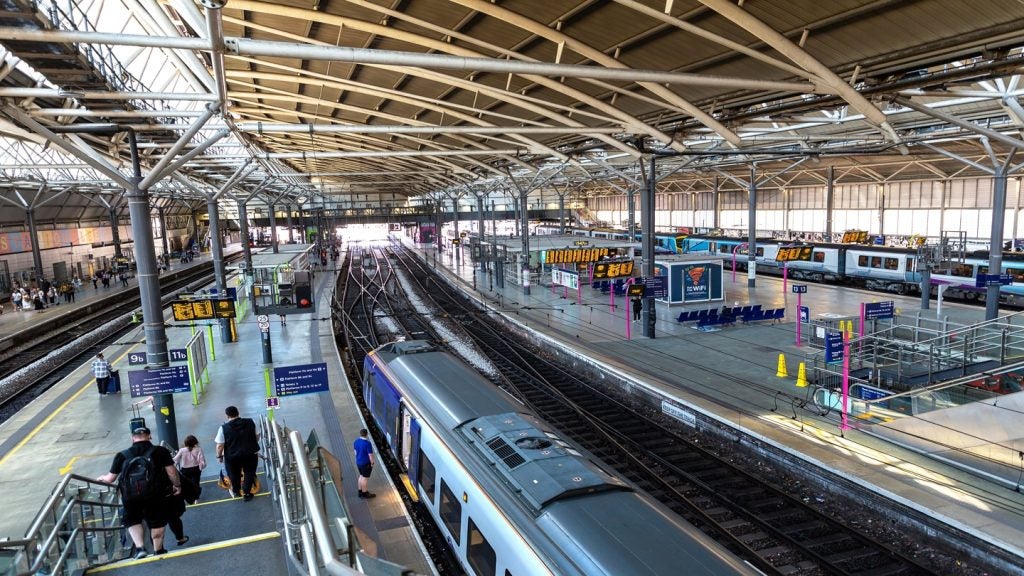Passenger coach manufacturers, and the train interiors they design, play an enormous role in the experience of rail passengers.
Ergonomics, material suitability, styling and cost-effectiveness are key factors in the selection of railway coach interiors.
Modern passenger coaches are now, more often than not, furnished with unique interior concepts and state-of-the-art onboard railway systems and amenities.
These are all designed and intended to improve passenger comfort and experience, are increasingly in demand.
Leading passenger coach manufacturers and railway design specialists
Based on its experience in the sector, Railway Technology has listed leading passenger coach manufacturers and interior designers.
The products offered include express passenger coaches, mainline passenger coaches, dining cars, railway coach designs, interior and exterior styling, custom fabrics and seating, surfaces, furnishings, and lighting systems.
Some of these leading suppliers also offer tailor-made railway coach designs to meet the requirements for new rolling stock or refurbish existing passenger cars for metros, tramways and high-speed or long-distance railways.
Our download information has been rigorously researched and carefully compiled.
This content is useful for procurement officers, coachbuilders, rail interior designers, train maintenance technicians, operators and other individuals involved in the acquisition, operation and maintenance of passenger coaches.
The download also contains detailed information on the manufacturers and suppliers, as well as their product offerings and contact details for procurement purposes.
Passenger coaches and interiors for railways
Passenger coaches and interior products and solutions offered for rolling stock operators include, but are not limited to:
- Long-distance passenger coaches, saloon coaches and sleeping cars
- Passenger railway interiors, station planning and design
- Interior solutions and maintenance services
- Seats and toilet modules
- Passenger access products
- Air-conditioning
- On-board electronics and communication solutions
- Standard and sunlight-readable displays for public information and advertising
High-quality railway interiors
Custom-designed, wear-resistant railway interiors such as window panels, partition walls, screen covers, luggage racks, ceilings, doors and fairings, enable rail vehicle designers and operators to configure their rolling stock according to operational requirements.
Durability, functionality and aesthetics are important to consider when selecting materials for passenger coach interiors.
High-strength aluminium, titanium, stainless steel, polymers, composites and renewable materials are some commonly used materials.
FAQs
What are the key considerations for railway passenger coach interior design?
Interior design for passenger coaches focuses on ergonomics, durability, comfort, and aesthetics. Materials used must withstand wear while ensuring passenger safety and comfort.
Customizable designs, such as seating layouts, storage solutions, and lighting, allow for tailored passenger experiences.
Modern interiors incorporate sustainable materials, noise reduction technologies, and energy-efficient systems to improve operational efficiency and passenger satisfaction.
How does ergonomics affect passenger comfort in train interiors?
Ergonomic design is crucial in optimizing passenger comfort, reducing fatigue on long journeys, and ensuring accessibility.
Features like adjustable seats, intuitive grab handles, and adequate legroom create a more comfortable travel experience for passengers, contributing to customer satisfaction and safety.
What materials are commonly used in railway coach interiors?
Materials like high-strength aluminium, stainless steel, and durable polymers are commonly used for railway interiors.
These materials provide long-lasting durability while maintaining lightweight and eco-friendly properties.
Additionally, renewable materials and composites are becoming popular for environmentally conscious designs.
How are modular designs enhancing railway coach interior flexibility?
Modular interior designs allow for easier customization of seating arrangements, storage spaces, and other elements based on specific route demands or passenger preferences.
This flexibility enables operators to update or reconfigure train interiors without costly overhauls, improving adaptability for future needs.
What role does technology play in modern railway interior design?
Advanced technologies, including integrated entertainment systems, wireless internet, and smart lighting, are now commonly incorporated into train interiors to improve passenger experience.
Additionally, digital displays and connectivity features enhance onboard communication and keep passengers informed during their journey.






